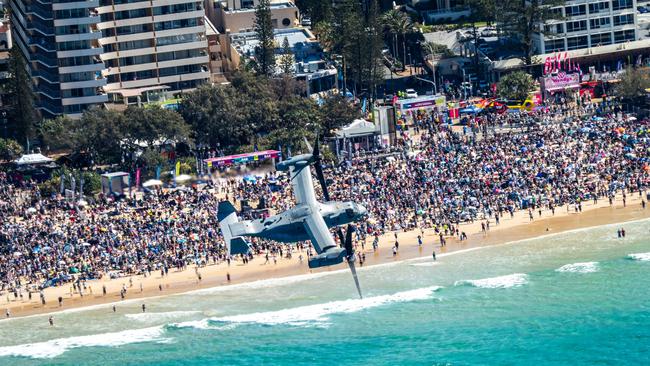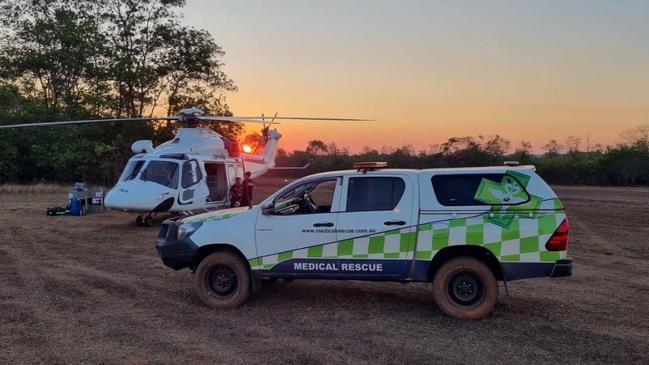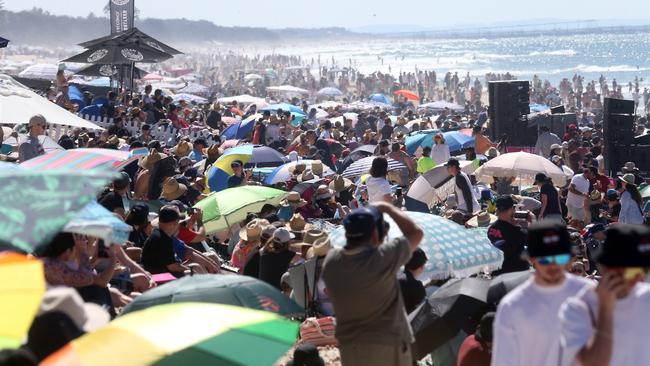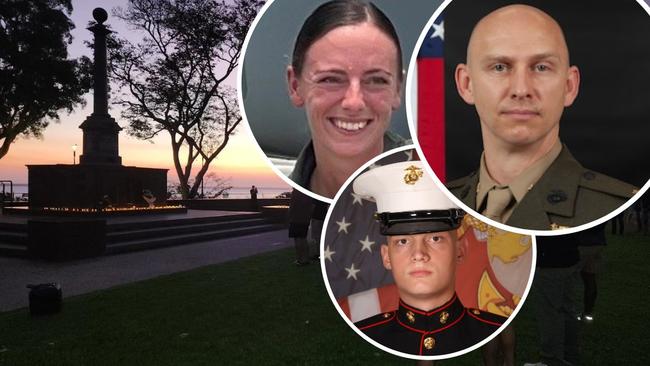Crew from Gold Coast company Medical Rescue first on scene of fatal NT Osprey aircraft crash
A Gold Coast medical team working nearby when an Osprey aircraft crashed, killing three US Marines, was first to the scene, administering lifesaving support to survivors.
Gold Coast
Don't miss out on the headlines from Gold Coast. Followed categories will be added to My News.
A Gold Coast medical team was first to the scene of the fatal Northern Territory defence training crash, delivering lifesaving treatment for 30 minutes before more help arrived.
Captain Eleanor LeBeau, 29, Major Tobin Lewis, 37, and Corporal Spencer Collart, 21, were killed on Sunday when their Osprey crashed during Exercise Predators Run on Melville Island, 80km north of Darwin.
Another Marine was critically injured and has since been transferred to the Alfred Hospital in Melbourne.
Meanwhile, both Pacific Airshow organisers and the US Marine Corps have declined to comment on what safety considerations were made when deciding to exhibit the Osprey in front of hundreds of thousands of fans at Surfers Paradise a week earlier.

A crew of two critical care paramedics and two doctors, from Gold Coast company Medical Rescue, had been stationed at Melville Island just 10 minutes from the crash site.
The company had been contracted by the Australian Defence Force and Toll Helicopters to provide aeromedical support and ground operations to the training exercise, and were nearby when the emergency call was made.
Its crew stabilised a critically-injured Marine, administering blood products and resuscitation for 30 minutes.
“He wouldn’t be alive if our teams weren’t so close by,” said Medical Rescue executive director Michael Smith.
“Our crew heard the call over the radio and were less than 10 minutes from the scene.
“Our critical care doctors and paramedics were winched into the remote terrain, where they immediately began to assess the mass casualty event.
“They were on the scene 25-30 minutes before the teams from CareFlight in Darwin arrived.”

The Medical Rescue crew handed over the critically ill Marine to CareFlight for transport to Darwin.
Mr Smith said it was a confronting scene for his team.
“For any aeromedical crew responding to an aviation incident, it is challenging because it brings into reality the risks of aviation,” he said.
“But they were able to put that aside and initiate significant assistance – it was lifesaving.”

The Osprey tiltrotor aircraft was a major part of the Pacific Airshow line up, firing off flares as it buzzed the beachfront lined with 20,000 paying attendees daily.
Double that were estimated to be watching free from hotels and outside the airshow beach exclusion zone.

One of the Marines who tragically did not survive, Major Lewis, whose call sign was “Smeagol”, had been piloting the Osprey for the beachfront crowds.
Airshow organisers declined to answer questions on what safety considerations had been made ahead of the Gold Coast event and whether the aircraft would appear at future airshows.
Major Matthew Wolf of the Marine Rotational Force, Darwin, also declined to comment on the Osprey’s airshow appearance.
The Bell Boeing V-22 Osprey has been dogged by safety concerns, with more than 15 crashes credited with taking 54 lives, including the three lost on Sunday.
The cause of the most recent crash remains under investigation, with police expecting it to take up to 10 days.
Originally published as Crew from Gold Coast company Medical Rescue first on scene of fatal NT Osprey aircraft crash




